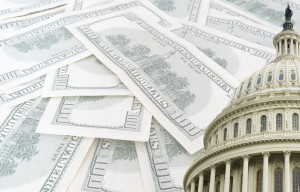 At present, 31% of the American workforce is self-employed. In the next five years, those numbers will swell dramatically, and by 2022, 50% of the private sector will either be independent or will have worked as an independent at some point in their careers.
At present, 31% of the American workforce is self-employed. In the next five years, those numbers will swell dramatically, and by 2022, 50% of the private sector will either be independent or will have worked as an independent at some point in their careers.
The government has yet to seize a huge opportunity in this motivated and entrepreneurial population of more than 40 million. By creating and implementing a compliant safe harbor for independent professionals, the government will be able to simultaneously remove the economic friction of complex compliance burdens, reduce the tax gap, and encourage innovation and job creation alike.
MBO Partners has developed a working model for this safe harbor, dubbed Certified Self-Employed (CSE). The goal of such a designation is twofold: first, to remove roadblocks impeding the growth of the independent services market while embracing many of the elements of the safety net provided by the traditional employer-employee social contract. As Cato Institute fellow Ike Brannon recently said, if the safe harbor included a provision for the withholding of estimated taxes due, as is done for actual employees, the savings could exceed $250 billion, more than half of the current tax gap.
PREMIUM CONTENT: Introduction to Online Staffing Enabling Technologies
Establishing CSE, or a similar safe harbor designation, would be more than simply a tax pay-for, however. A CSE solution would spur a new industry to service our nation’s vital independent population. CSE would also solve for other issues currently at play for the independent workforce, providing them with elements of traditional employment such as portable benefits, tax revenue funding as income is earned (in a verifiable and easily auditable system), easy transaction processing, education on how much to charge to cover these social elements, and other support services.
A safe harbor solution such as CSE would create a certification system in which self-employed workers are able to declare themselves compliant. As a result, independents could work easily with any client they choose, and clients could engage these vetted and certified individuals without fear of misclassification. The proposal as outlined not only reduces self-reporting tax errors, but also allows for the ongoing supported growth of the independent workforce, a group that generates over $1.2 trillion in tax revenue each year for the United States. If the independent workforce were incentivized to grow and further develop, the implications for job growth and the economy would be tremendous.
We need the government to act quickly to address classification issues in order to benefit businesses and self-employed workers in the near-term, and boost our economy in the long-term. A safe harbor solution allows for both simultaneously.
I have met recently with many industry groups and government officials, and initial interest is strong. This solution was also widely discussed among members of congress and industry experts at a recent DC policy forum.
The time is now. We must now call on the Joint Committee on Taxation to further examine the issue and to help propose legislation if such a solution is deemed valid.
With a safe harbor in place, the growth and contributions of this valuable portion of the workforce could grow exponentially, creating manifold benefits for the government and nation at large.
MORE: Self-Employed High Earners Are Healthier, Wealthier and Happier








